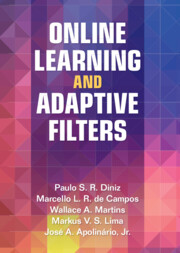46 results
Expanding pathways to clinical and translational research training with stackable microcredentials: A pilot study
-
- Journal:
- Journal of Clinical and Translational Science / Volume 8 / Issue 1 / 2024
- Published online by Cambridge University Press:
- 30 September 2024, e138
-
- Article
-
- You have access
- Open access
- HTML
- Export citation
Rome: The Game. Creating an online course as an interactive adventure game
-
- Journal:
- Journal of Classics Teaching / Volume 25 / Issue 50 / Autumn 2024
- Published online by Cambridge University Press:
- 03 June 2024, pp. 155-165
-
- Article
-
- You have access
- Open access
- HTML
- Export citation
Online palliative care education and mentorship in Nepal: Project ECHO – a novel approach to improving knowledge and self-efficacy among interprofessional health-care providers
-
- Journal:
- Palliative & Supportive Care / Volume 22 / Issue 5 / October 2024
- Published online by Cambridge University Press:
- 13 May 2024, pp. 1329-1337
-
- Article
-
- You have access
- Open access
- HTML
- Export citation
Short but Sweet: How Nano-Training Expanded our Reach
-
- Journal:
- Legal Information Management / Volume 23 / Issue 4 / December 2023
- Published online by Cambridge University Press:
- 02 February 2024, pp. 225-229
- Print publication:
- December 2023
-
- Article
-
- You have access
- HTML
- Export citation
Chapter 17 - Digital technologies in the mathematics classroom
-
- Book:
- Primary Mathematics
- Published online:
- 01 September 2023
- Print publication:
- 07 September 2023, pp 349-364
-
- Chapter
- Export citation
Investigating the Effectiveness of Online Bioarchaeology Education through Participant Survey of a Cohort of International Adult Learners
-
- Journal:
- Advances in Archaeological Practice / Volume 11 / Issue 4 / November 2023
- Published online by Cambridge University Press:
- 23 August 2023, pp. 421-433
-
- Article
-
- You have access
- Open access
- HTML
- Export citation
‘Caecilius Est Internet’: A Study of Year 7 Latin Beginners' Perspectives on the use of an Online Chat function and Breakout Rooms using the Cambridge Latin Course
-
- Journal:
- Journal of Classics Teaching / Volume 24 / Issue 48 / Autumn 2023
- Published online by Cambridge University Press:
- 02 May 2023, pp. 127-132
-
- Article
-
- You have access
- Open access
- HTML
- Export citation
6 - Neural Networks
-
- Book:
- Introduction to Environmental Data Science
- Published online:
- 23 March 2023
- Print publication:
- 23 March 2023, pp 173-215
-
- Chapter
- Export citation
7 - Online Silence
-
- Book:
- Silence in English Language Pedagogy
- Published online:
- 02 February 2023
- Print publication:
- 09 February 2023, pp 105-128
-
- Chapter
- Export citation
The development and efficacy of a paediatric cardiology fellowship online preparatory course
-
- Journal:
- Cardiology in the Young / Volume 33 / Issue 10 / October 2023
- Published online by Cambridge University Press:
- 28 November 2022, pp. 1975-1980
-
- Article
-
- You have access
- Open access
- HTML
- Export citation

Online Learning and Adaptive Filters
-
- Published online:
- 24 November 2022
- Print publication:
- 08 December 2022
Utilization of the TRAIN Learning Network for Online Disaster Medicine and Public Health Training During the COVID-19 Pandemic
-
- Journal:
- Disaster Medicine and Public Health Preparedness / Volume 17 / 2023
- Published online by Cambridge University Press:
- 05 September 2022, e285
-
- Article
- Export citation
Chapter 13 - Combining Work Experience with Digital Learning
- from Part III - Changes in Teaching Content
-
-
- Book:
- Digital Transformation and Disruption of Higher Education
- Published online:
- 09 June 2022
- Print publication:
- 23 June 2022, pp 159-168
-
- Chapter
- Export citation
Chapter 18 - Universities’ Online Networking Operations
- from Part IV - Networking and Social Activities
-
-
- Book:
- Digital Transformation and Disruption of Higher Education
- Published online:
- 09 June 2022
- Print publication:
- 23 June 2022, pp 223-236
-
- Chapter
- Export citation
Chapter 11 - Quality Assurance and Enhancement
- from Part II - Changes in Teaching Formats
-
-
- Book:
- Digital Transformation and Disruption of Higher Education
- Published online:
- 09 June 2022
- Print publication:
- 23 June 2022, pp 130-144
-
- Chapter
- Export citation
Chapter 3 - Online Learning
- from Part I - (R)evolution of the Higher Education Sector
-
-
- Book:
- Digital Transformation and Disruption of Higher Education
- Published online:
- 09 June 2022
- Print publication:
- 23 June 2022, pp 22-33
-
- Chapter
- Export citation
Chapter 19 - Shared Learning in Higher Education
- from Part V - Certification and Diplomas
-
-
- Book:
- Digital Transformation and Disruption of Higher Education
- Published online:
- 09 June 2022
- Print publication:
- 23 June 2022, pp 239-254
-
- Chapter
- Export citation
Cheating or learning? An investigation into Year 8 students' perceptions of the Cambridge Latin Course Explorer Tool and its role in both classroom teaching and online learning
-
- Journal:
- Journal of Classics Teaching / Volume 23 / Issue 46 / Autumn 2022
- Published online by Cambridge University Press:
- 07 April 2022, pp. 147-154
-
- Article
-
- You have access
- Open access
- HTML
- Export citation

